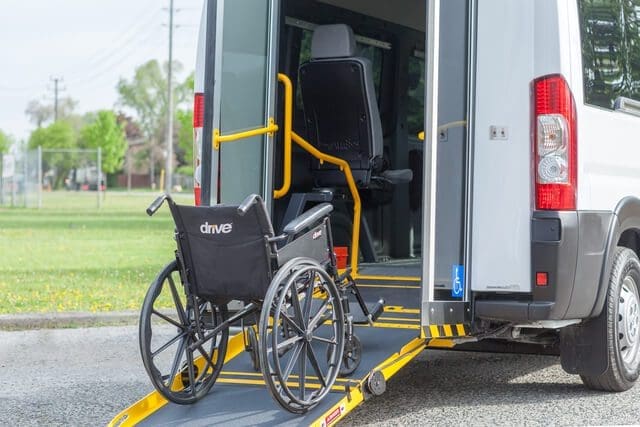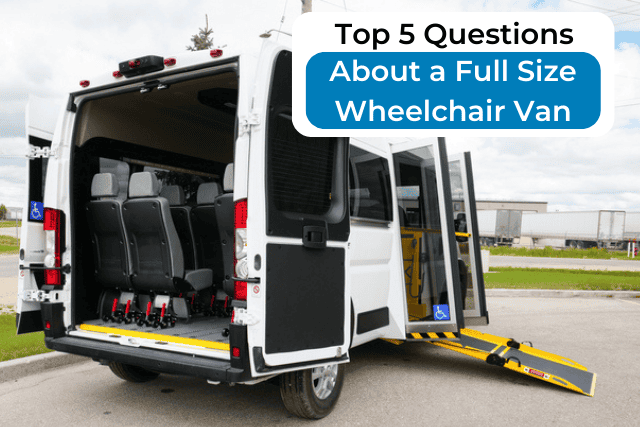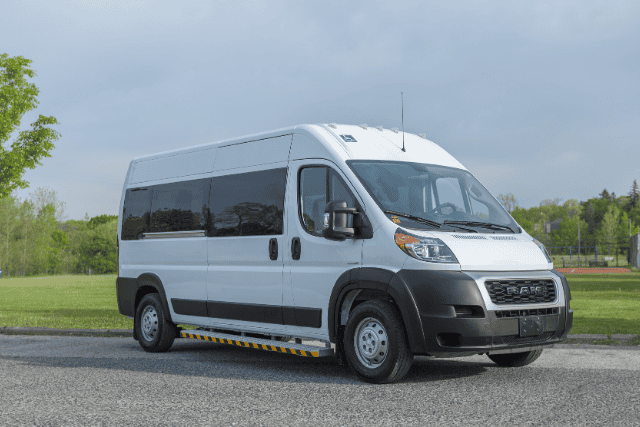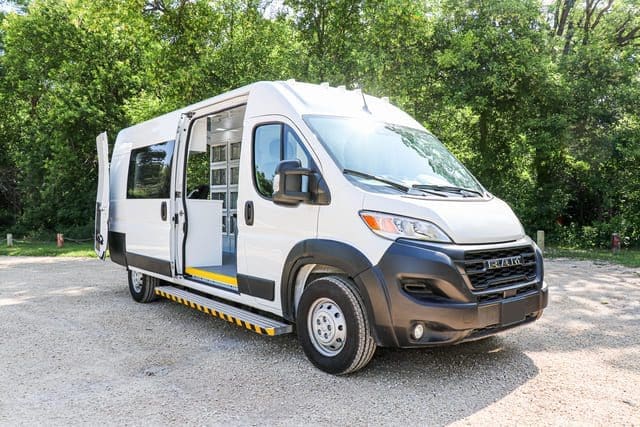Is your organization considering a full size wheelchair van? If so, you probably have a lot of questions. That’s natural. Choosing the right full size wheelchair accessible van is a big decision—one that directly impacts your ability to provide safe, reliable transportation.
The wrong choice can lead to gaps in service:
- Missed appointments
- Frustrated caregivers
- Limited access to essential care
You’re likely feeling the pressure to get it right because lives and livelihoods depend on it.
At AVAN Mobility, we’ve spent over 10 years building mobile medical and wheelchair accessible vans that break down barriers to healthcare and transportation. Our mission is to provide vehicles that help people, save lives, and make an impact.
While we believe in our products, we understand we’re not the only manufacturer in the market. That’s why we prioritize honest, unbiased information to guide you toward the best solution—whether that’s with us or someone else.
In this article, we’ll walk you through the five most common questions organizations ask us when looking for a full size wheelchair van. Some of these questions might also be on your radar, so stay tuned.
5 common questions about full size wheelchair vans

In this section, we’ll talk about some of the questions we get asked most from organizations like yours.
1. Is a full size wheelchair van the right choice for my organization?
Choosing the right van becomes simpler when you know who it’s made for. Here are two key things to consider:
Drivers comfortable with larger vehicles: Full size wheelchair vans are bigger than minivans, which might make them feel slightly intimidating for some people at first. If tight corners and narrow parking spots sound overwhelming, you’re not alone.
But practice changes everything. Many drivers say that once they get used to it, driving a full size wheelchair van like the Ram Promaster feels pretty similar to handling a Dodge Grand Caravan.
Organizations needing more space for people and equipment: If your team regularly transports multiple wheelchair users or larger groups, a full size van can be the solution you need.
At AVAN Mobility, we recommend going with a full size wheelchair van for organizations that move more than one wheelchair at a time. It’s all about having the right setup to meet everyone’s needs.
Does this sound like the right fit? If so, let’s keep going and answer more of the top questions you might have.
2. What makes a full sized wheelchair van full size?
It’s pretty simple—what makes a wheelchair van “full size” is the extra space. These vans are bigger, giving you more room for people, wheelchairs, and supplies. In the United States, where bustling urban centers like New York meet sprawling rural landscapes in states like Texas, a larger van offers a reliable solution for agencies and nonprofits providing accessible transportation.
At AVAN Mobility, we convert vans like the Ram Promaster into wheelchair accessible vehicles. These ADA-compliant, full size vans are built to work just as well in big cities as they do in small towns, helping people get where they need to go—no matter where they are.
Here’s what makes these vans stand out:
More room for big groups: Full size vans can fit up to 10-12 people, including the driver, making them perfect for organizations that transport lots of passengers, like senior centers, adult daycares, or community programs.
Space for large wheelchairs or equipment: Need to move power wheelchairs or medical supplies? These vans give you the space you need so nothing feels cramped.
Carry multiple wheelchairs easily: Got more than one wheelchair user? No problem. Full size vans make loading, securing, and safely transporting everyone easy.
If your organization needs a reliable way to move people across busy streets or long country roads, a full size wheelchair van might be just what you’re looking for. Ready to dive into the next big question? Let’s keep going!
3. Ramp or lift: which is the better fit for a full size wheelchair van?
When customizing a full size wheelchair van, one thing you’ll need to decide on is whether to go with a ramp or a lift. Each option has its own advantages, depending on how and where the van will be used.
Here’s a quick look to help you choose:
Ramps: Ramps are easy to use and low maintenance. They’re a great option if you have plenty of space to load and unload passengers. They’re especially useful in open areas like parking lots or curbside drop-offs.

Lifts: Lifts are ideal for situations with higher entry points or heavier power wheelchairs. They offer a hands-free solution, making them ideal in tight or indoor spaces where a ramp might not fit.

If you’re still weighing your options, check out our article comparing ramps and lifts for a deeper dive into each.
Now that you know more about conversion options, let’s move on to the next question we get, which is about passenger capacity. Stick with us!
4. What’s the passenger capacity of a full size wheelchair van?
As we briefly mentioned earlier, when it comes to passenger capacity, full size wheelchair vans typically seat 10 to 12 people, including the driver. The exact number can vary depending on the specific model you purchase.
One of the best things about full size vans is their flexibility. Here’s how that works:
Adjustable seating: Seats can be added or removed to fit your needs. This makes it easy to create extra room for multiple wheelchair users or larger equipment.
Custom layouts: If you need more space for passengers or equipment, the van can be set up to match your organization’s unique needs. If you’re interested in learning more about our layouts, click the button below.
This flexibility makes full size wheelchair vans a great fit for all types of organizations—whether you’re transporting patients, residents, or community members.
5. How much does a full size wheelchair van cost?
A full size wheelchair van typically costs between $120,000 and $170,000, depending on the model and the features you select.
Here are a few things that can affect the price:
Conversion type: Side-entry or rear-entry conversions come at different price points, so choosing the right one is essential.
Upgraded systems: Adding a high-capacity heating and air conditioning system ensures comfort in extreme weather but adds to the cost.
Security system: If you need extra safety, a security system is available as an upgrade.
Seating options: Custom seating arrangements give more flexibility but can also affect the final price.
Interior paneling: Durable paneling can enhance the interior, but it comes at a premium.
Trail Edition package: This upgrade offers extra durability if you’ll be operating in rural areas and need a van ready for rougher terrain.
Though full size wheelchair vans require a significant investment, they are built to handle demanding transportation needs. With thoughtful customization, your organization will have a reliable vehicle that meets your needs and serves your passengers well for years to come.
Do you have more questions about full size wheelchair vans?
You most likely landed on this article while browsing for answers to your questions about full size wheelchair vans. We hope that the answers to these five most common questions gave you a bit more clarity in deciding if one of these vehicles is right for your organization.
Our team at AVAN Mobility works hard to make sure our products can suit your needs and the needs of the people you serve. If you have any other questions aside from the ones we’ve talked about in this article, don’t hesitate to click the button below to talk to a mobility expert.
If you’re still in research mode, we have a couple of other articles that might help answer more of your questions.
Start with our article on the differences between rear entry and side entry wheelchair vans. This will give you some more clarity on which one is the most suitable for your organization.
After that, check out our article making a van wheelchair accessible. This will give you a closer look at what’s involved in wheelchair van conversions.





